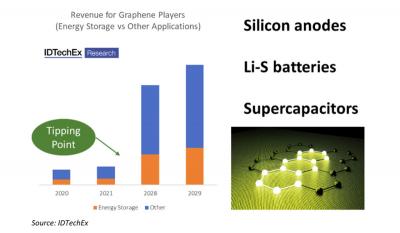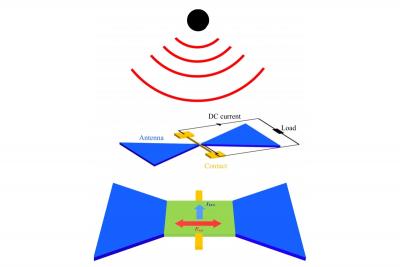Significant Market Opportunities for Graphene in Energy Storage
This is a sponsored post by Dr. Alex Holland, IDTechEx
Graphene has been heralded as a wonder material for years, with many believing a tipping point is rapidly approaching. It undoubtedly has the potential for use in numerous applications with one of the most notable being the energy storage market. Li-ion demand for plug-in electric cars alone is forecast to be nearly 350 GWh by 2025. IDTechEx forecasts that over 30% of the graphene market will be used in energy storage applications within the next decade with multiple high-profile use cases; see IDTechEx’s reports Li-ion Batteries 2020-2030, and Graphene, 2D Materials and Carbon Nanotubes 2019-2029 for more details.

One of the most significant technological developments in energy storage regards the use of silicon dominant anodes in Li-ion batteries. The theoretical capacity of silicon is around 10x that of graphite and has therefore been the topic of intense activity in the Li-ion market - Over $500 million has been invested in silicon anode start-ups alone since 2015. However, the material is plagued by one major issue: when lithiated, it can expand in volume by 300%. This causes various issues around loss of electrical connection between electrode particles and decomposition of the electrolyte, which ultimately leads to poor cycle life.






